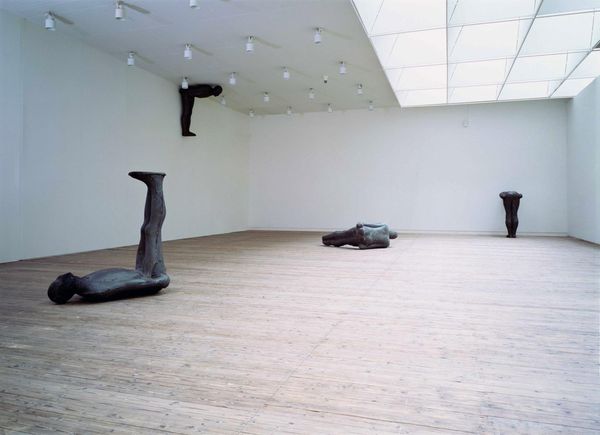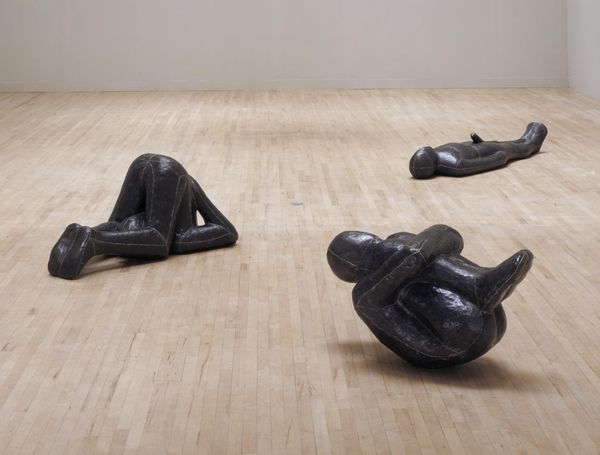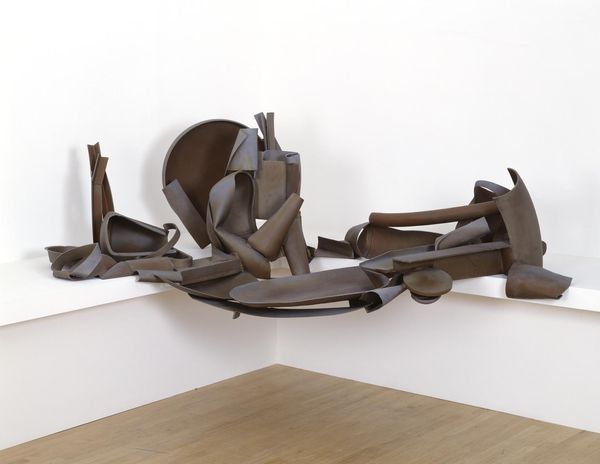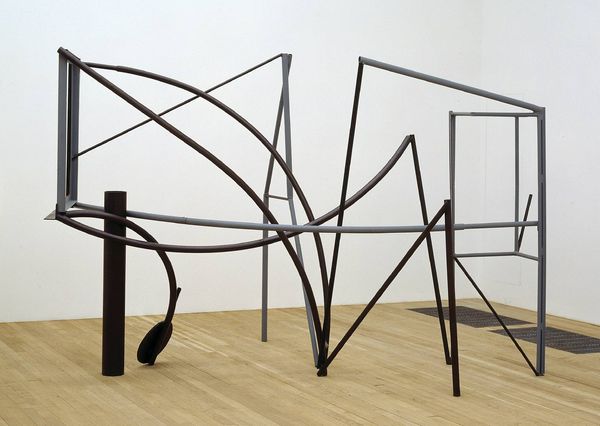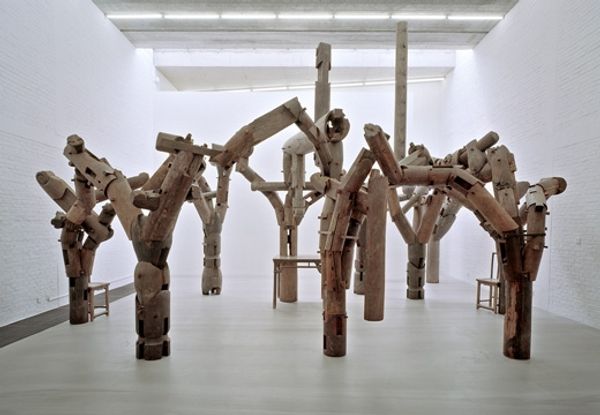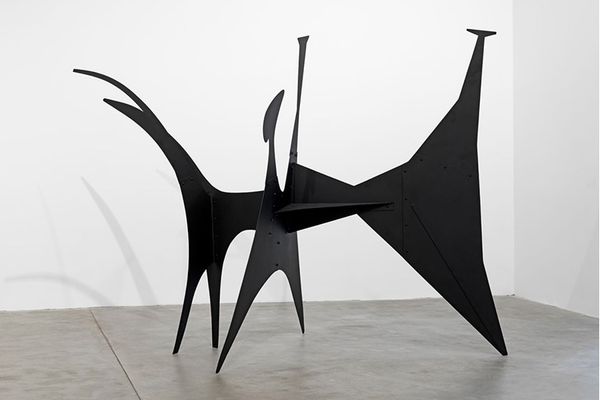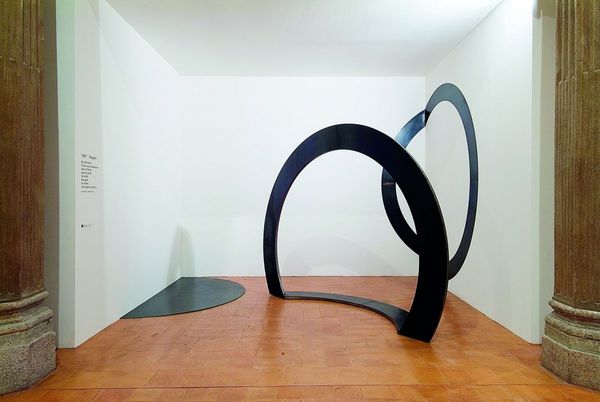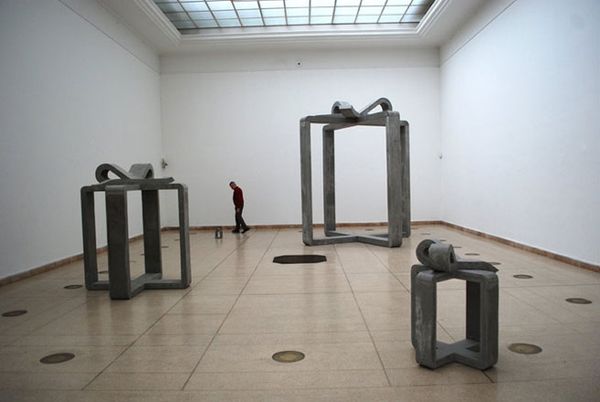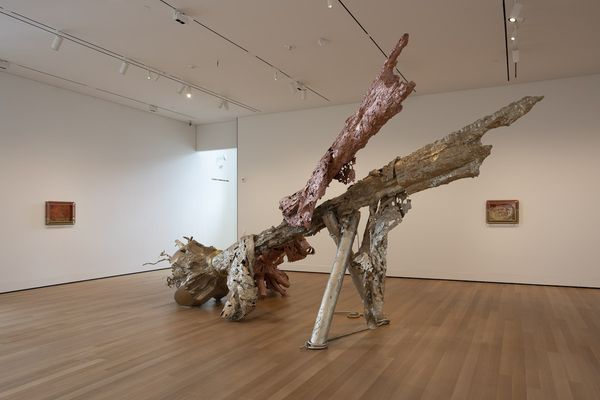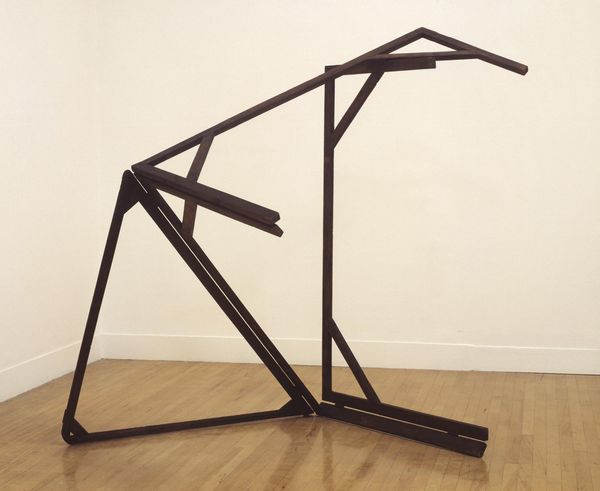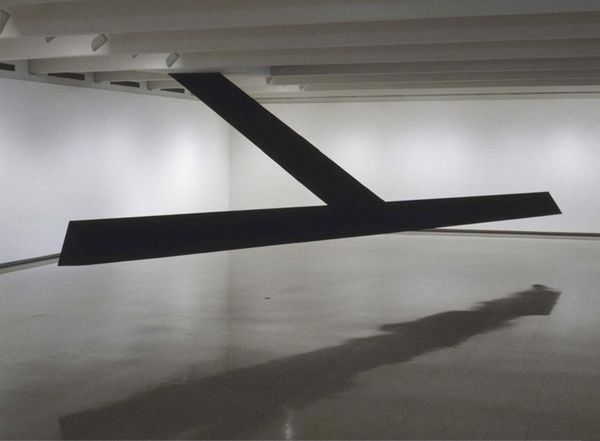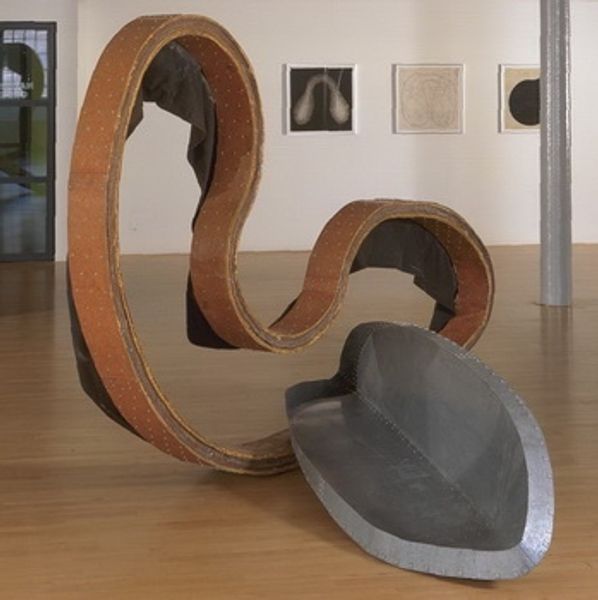
Dimensions: unconfirmed: 2760 x 10770 x 3350 mm
Copyright: © The estate of Anthony Caro/Barford Sculptures Ltd | CC-BY-NC-ND 4.0 DEED, Photo: Tate
Editor: So, this is Sir Anthony Caro's "Night Movements," created sometime before his death in 2013. These large steel forms, arranged almost like actors on a stage, feel strangely weighty. What's your take on the materiality and arrangement? Curator: Considering Caro's commitment to "truth to materials," notice how the industrial origins of steel are embraced, not disguised. The visible welds and raw edges speak to the labor-intensive process. How does this emphasis challenge traditional notions of sculpture as refined and permanent? Editor: That's a great point. It feels less about idealized form and more about the act of making itself. I see it now. Thanks! Curator: Precisely. By foregrounding the means of production, Caro invites us to reconsider the relationship between art, industry, and labor.
Comments
Join the conversation
Join millions of artists and users on Artera today and experience the ultimate creative platform.
tate 6 months ago
⋮
Night Movements is a large work that encapsulates the principal technical and conceptual developments of Anthony Caro's work in the 1980s. During this period Caro's use of materials new to his practice stimulated a significant extension of his sculptural vocabulary. As he explored the formal possibilities of such materials as brass, silver, ceramic and paper a new fluidity began to emerge in his monumental steel works. The large sweeping shapes of Night Movements, which belie the actual intransigence of the steel, demonstrate this new direction in his work. Night Movements was Caro's first multi-part sculpture in twenty-six years, the only previous example being The Horse 1961. It comprises four free-standing units, created from boiler cases, bollards, propellers and other pieces of maritime ephemera Caro found in the scrapyards of Chatham and Portsmouth. These bits of metal have been bent, buckled and twisted before being welded together to articulate space and create rhythm and movement. The relative positions of the units are determined by the use of a template supplied by the artist. Although each section of the sculpture has a distinct character, they remain related to one another in terms of colour, technique, scale and formal language. The careful siting of each piece in relation to the others is intended to ensure that the space between the different units becomes part of the sculpture. The spacing invites the viewer to walk among the parts, sensing their relative positions, changing scale and appearance. The viewer's physical involvement with space is a central concern in Caro's investigation of the architectonic aspect of sculpture, and is a major theme in the work of such twentieth century sculptors as Henry Moore and Richard Serra. The work reflects Caro's interest in existing works of art as sources of inspiration. In this case, the pictorial source of the sculpture's emphatic vertical orientation, its large cupped planar elements, and its dark green stained surfaces have been ascribed by Paul Moorhouse to the tree motif found in the paintings of the French nineteenth century realist painter Gustave Courbet. There is, however, no literal equivalence between Caro's work and its model. Instead, Caro has taken the essence of the figurative original and transformed this into an abstract sculpture whose forms are fully resolved in their own right. Further reading:Paul Moorhouse, Anthony Caro: Sculpture towards Architecture, exhibition catalogue, Tate Gallery 1991, pp.29-30, reproduced pp.40-41 (colour)Anthony Caro, Museum of Contemporary Art, Tokyo 1995, reproduced pp.127-131, cat.no.108 (colour)Dieter Blume, Anthony Caro: catalogue raisonné vol.IX, Cologne 1991, reproduced pp.114 and 155, cat.no.2072 Toby TrevesJune 2000
